If you are considering visiting Madrid, I highly recommend exploring the city on foot or using public transportation. It’s cost-effective, efficient, and safe, not to mention it is a greener choice. Plus, most of the main attractions are conveniently close to each other.
However, there are occasions when renting a vehicle might be more convenient, especially if you are planning excursions outside Madrid. Just so you know, the roads in Spain are well-maintained and safe.
Driving in Madrid is not significantly different from driving in many other European countries in terms of rules and regulations. Still, it is worth checking out these 10 essential things to know about driving in Madrid before you take the wheel.
1. Is it safe to drive in Madrid?

Yes, driving in Madrid is generally safe. The roads are well-maintained, and Spain boasts one of the lowest numbers of traffic accidents in Europe and a comparatively lower road mortality rate.
However, like any bustling urban area, it is wise to stay alert, especially during peak traffic hours. Taking usual precautions like following traffic signs, being mindful of pedestrians, and staying updated on local driving rules can ensure a smooth ride through the city.
2. What are the driving requirements in Madrid?
If you are thinking about driving in Madrid, keep in mind that the minimum driving age in Spain is 18 years old and you must be at least 21 years old to rent a car.
Besides, you must find out if your driving license is valid here, whether you must exchange it or if you need to obtain the International Driving Permit:
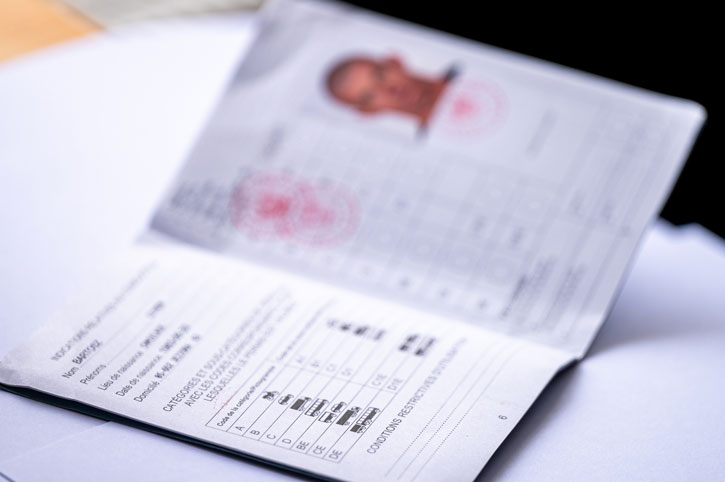
EU and EEA licenses and documents in Spanish
Licenses issued in European Union (EU) and European Economic Area (EEA) countries (including Iceland, Liechtenstein, and Norway) are fully valid for driving in Spain as long as they are current.
Also valid for driving in Spain are licenses from countries written in Spanish, those accompanied by an official translation, or issued according to the provisions of Annex 9 of the Geneva Convention or Annex 6 of the Vienna Convention.
However, if you are moving your residence to Spain, note that your foreign license is only valid for a maximum period of 6 months from the date you obtained residency. After that period, you will be required to exchange your foreign driving license for an equivalent issued in Spain.
Licenses from other countries
Licenses from countries not covered in the previous section require obtaining an international driving permit (IDP). This permit is issued and accepted in virtually all countries worldwide and is valid for one year.
Remember that an IDP is a translation of your original driving license and therefore it is valid only when presented alongside your original license.
Can I drive with my U.S. driver’s license in Madrid?
U.S. citizens driving in Madrid must have an international driving permit (IDP).
3. Basic rules for driving in Madrid
Ready to hit the road in Madrid? Whether you are exploring the city or planning a day trip, let’s dive into the essential rules to keep your drive smooth and hassle-free.
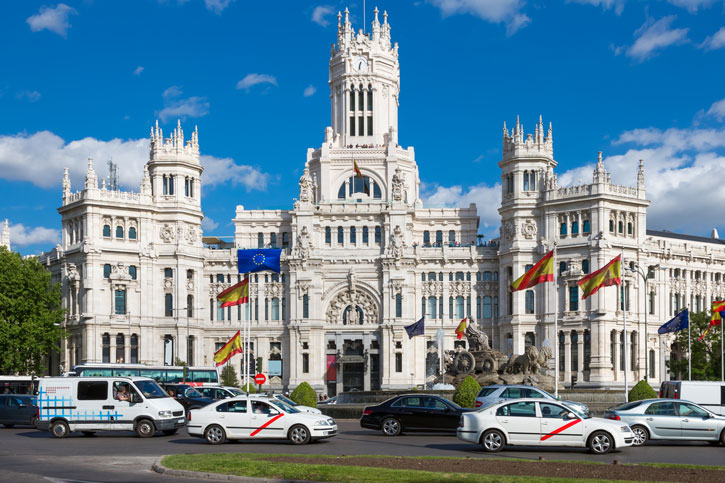
3.1 What side of the road to drive on?
In Madrid, like in the rest of Spain, people drive on the right-hand side of the road and overtake on the left. This is a bit of an inconvenience for Brits, but it is fantastic news for drivers from nearly everywhere else around the globe.
3.2 Speed limits
When driving in Madrid, it is crucial to keep an eye on speed limit signs because driving too fast can lead to hefty fines.
These are the general speed limits in Madrid, take into account that in Spain, the speed is measured in kilometers per hour (km/h):
- 20-50km/h (12-31mph) in residential or built-up areas
- 70-90km/h (43-56mph) on out-of-town roads
- 100-120km/h (62-74mph) on highways
3.3 Turning right at a red light
You CANNOT turn right at a red light in Spain, red means “stop” in all instances.
3.4 Crossroads
Generally speaking, the driver who gets to the crossroad first has the right of way and if two drivers arrive at the same time, the one to the right has the right of way.
Obviously, this rule only applies if there are no stop, yield signs, or traffic lights that would indicate otherwise.
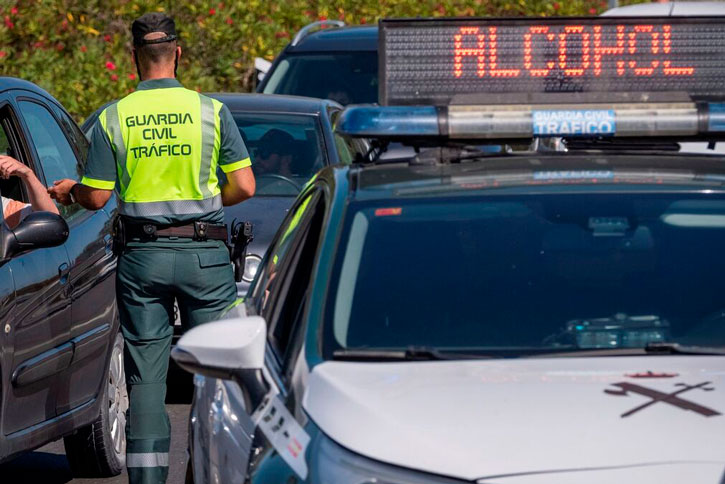
3.5 What are the rules on alcohol?
I always recommend not drinking at all if you intend to drive. It is extremely dangerous and penalties include heavy fines, loss of license, and imprisonment.
The alcohol limit for regular drivers in Spain is 0.5g per liter of blood or 0.25 milligrams per liter in exhaled air. The limits are even lower for beginners and professional drivers.
Driving in Madrid under the influence of drugs is illegal.
3.6 Safety
- All passengers need to wear seatbelts.
- Kids below 135 centimeters tall cannot sit in the front seat and need to be secured in a child safety seat that is appropriate to their size.
- Dial 112 to be connected to local emergency services.
- It is forbidden to talk on a cell phone without a hands-free device.
- If you see a yellow light at the traffic signal, it is important to stop unless it is unsafe to do so.
4. Parking in Madrid
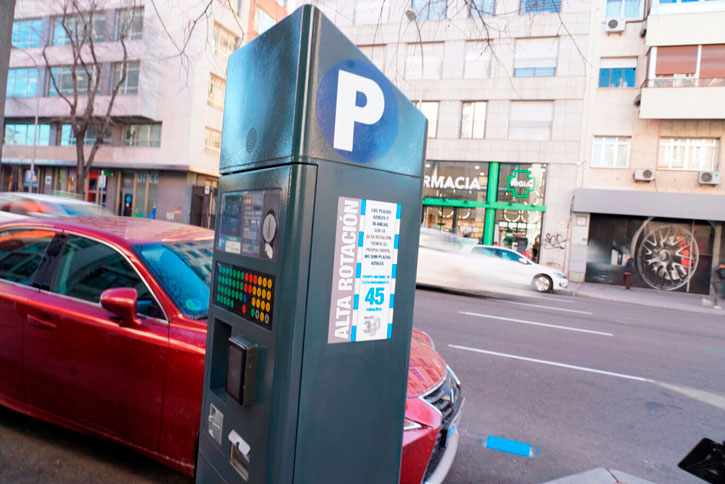
Parking in Madrid can be a bit of a puzzle, especially in the city center.
You will find designated parking zones marked by different colors: blue zones mean paid parking, green zones are for residents, and white zones often offer free parking, although they are very limited in availability.
You can pay by cash or card through the parking meters you will find on the street or using one of the authorized apps such as “elparking” or “telpark”.
Some of these zones only allow a maximum of 2-hour (green zones) or 4-hour (blue zone) parking from 9 a.m. to 9 p.m. during the weekdays (9.00-15.00 on Saturdays), which is why I usually search for public parking when I go to the city center by car.
Finally, vehicles with a zero-emission label can park for free and without time restrictions in the blue and green zones.
5. Gas stations
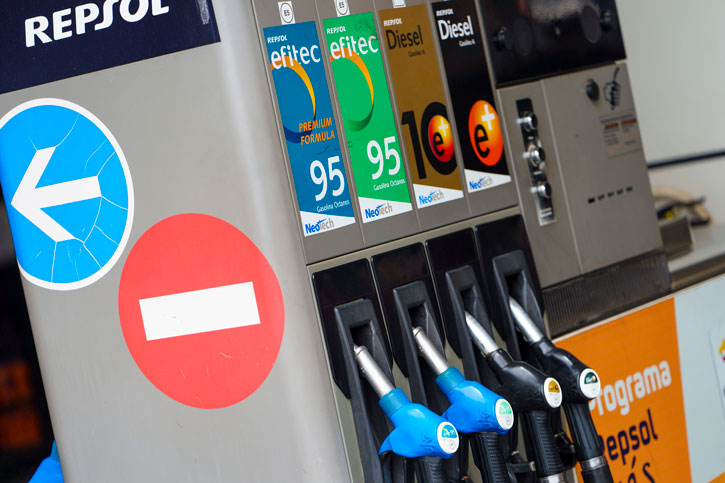
To refuel when driving in Madrid, you will find numerous gas stations along major roads and within the city center.
Most stations offer both diesel (“gasóleo”) and gasoline (“gasolina”) options, typically labeled as 95 (regular unleaded) and 98 (premium unleaded). Gasoline is relatively inexpensive compared to other countries in Europe, but still more expensive than in the US.
Remember to shut off the engine, radio, lights, and your mobile phone when refueling. Generally, you first fill the tank yourself and then pay inside the station by credit card or cash.
6. How to handle fines when driving in Madrid?

There are 2 possibilities when you receive a traffic fine:
- If you are notified of the penalty at the time of the offense you can pay the fine to the officer, but make sure to receive a receipt. If you are unable to pay an on-the-spot fine your vehicle could be immobilized.
- If you are informed of the fine by post, you can pay it by phone, through the website, in person, and through the official app. Check the details here and take into account that you have 20 calendar days to pay with a 50% reduction.
7. How to get around Madrid by car?

Navigating Madrid by car can be quite straightforward with its well-structured roadways. The city features a network of radial highways radiating from the center like the M-30 inner ring road that circles the heart of Madrid.
With the aid of GPS or Google Maps, finding your way around should be a breeze. However, keep in mind that in some tunnels along the M-30, you might experience signal loss. Those tunnels can be a bit of a navigation headache—I hear you, the M-30 can be a maze, causing frustration and confusion for many drivers.
8. Access restrictions to the city center
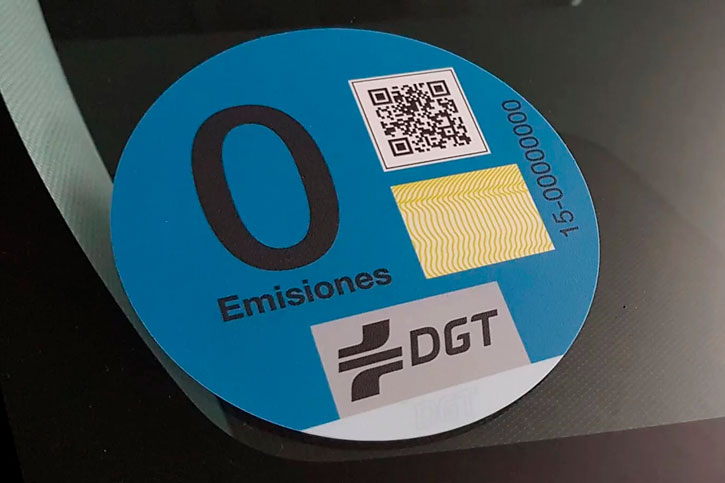
Most times it is better to use Madrid’s public transport because it is one of the best in Europe and helps us reduce pollution. However, if you do bring a car, you need to consider the Low Emission Zones.
There are different types of environmental labels to classify vehicles based on their energy efficiency. Vehicles without a label cannot enter the city of Madrid (inside the M-30 area). Vehicles with B and C labels can still enter if they park in a public or private parking lot, and cars with ECO and Zero labels can enter without limitations.
9. Are there tolls in Madrid?
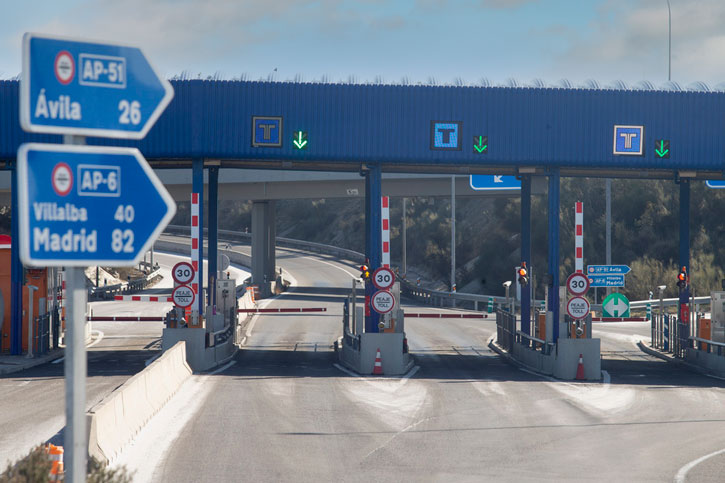
In Madrid, the vast majority of roads can be driven on for free. Nevertheless, in case you go for a day trip, you could find a few roads that may require the payment of a toll.
The cost varies in each case, but there are generally alternative routes that are free to use. Tolls may be paid in cash, by credit card, or using electronic toll services (requires the installation of a device in the car).
In my case, I only opt for toll roads when I take a trip outside of Madrid during peak hours or on dates with heavier traffic, like Fridays or holidays. In these situations, I prefer to pay the toll and avoid the traffic jams.
10. Renting a car in Madrid
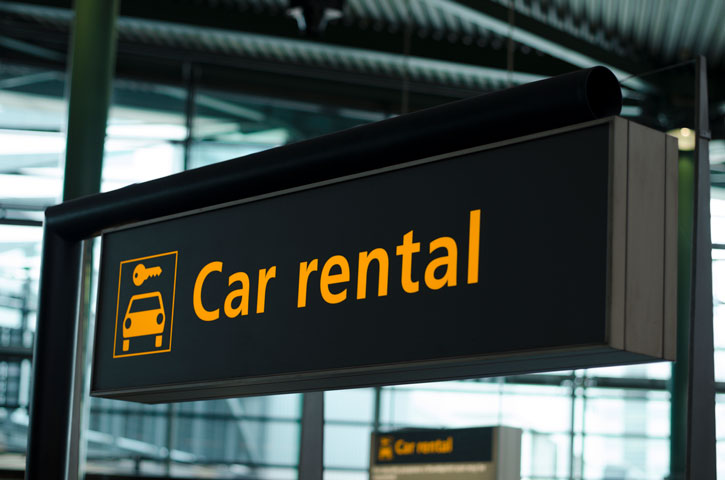
Renting a car in Madrid offers flexibility for exploring beyond the city limits.
Numerous rental companies operate in and around Madrid, offering a variety of vehicles to suit different needs. You will have no problem finding an automatic car, although its usage in Spain is not as widespread as in the US.
It is essential to have a valid driver’s license and a credit card for the rental process. Besides, the driver needs to be at least 21 years old.
Before hitting the road, carefully review the terms of the rental agreement, including insurance coverage, fuel policies, and any additional charges. I always recommend comparing prices and opting for comprehensive insurance directly with the rental company.
Conclusion
Driving in Madrid offers both opportunities and challenges. While the city boasts an efficient public transport system, having a car can be advantageous for exploring nearby areas.
Navigating Madrid’s roads requires attention to environmental regulations, like the Low Emission Zone, and awareness of traffic patterns during peak hours.
Renting a car provides flexibility, but it is essential to understand local driving rules regarding, for example, speed limits, alcohol, or crossroads.

